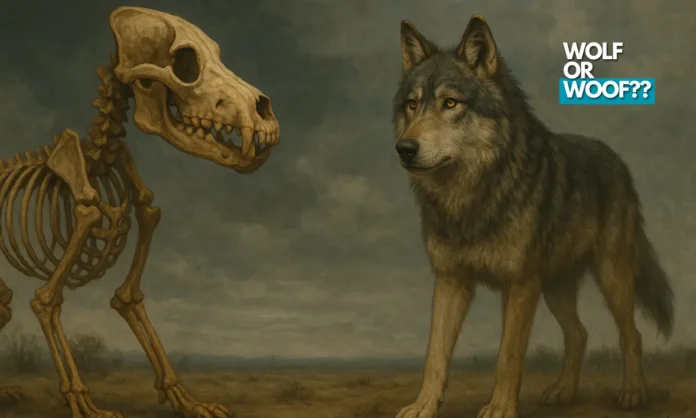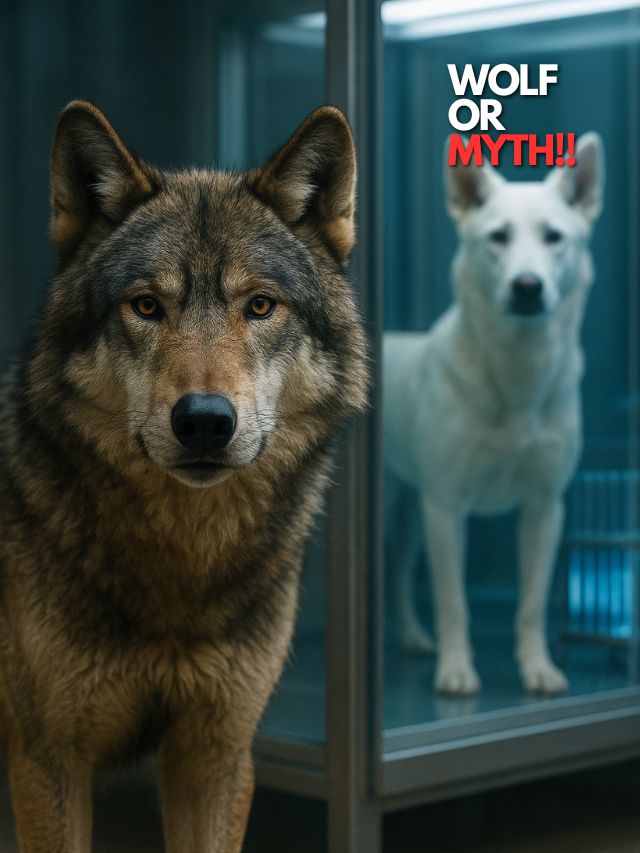SUMMARY
- Colossal Biosciences claims to have achieved the first-ever “de-extinction” by creating dire wolf-like animals, but genetic experts remain skeptical.
- Critics argue that only 14 genes were edited, branding the effort a marketing stunt rather than true scientific resurrection.
- Ethical concerns resurface over de-extinction hype, biodiversity risks, and the politicization of endangered species conservation.
The Myth of De-Extinction: How Hype Is Overshadowing Genetic Science
At a time when headlines are dominated by political and economic uncertainty, the story of Colossal Biosciences claiming to resurrect the long-extinct dire wolf offered a rare moment of wonder — until scientists began to dig deeper.
Despite orchestrating a massive media rollout to celebrate their work, Colossal’s claims have faced growing skepticism from geneticists and conservationists who say the company’s achievement falls far short of true de-extinction.
Beyond the scientific concerns, the controversy raises uncomfortable questions about how marketing can mislead public understanding of genetic advances, and how resurrection fantasies may dangerously undermine urgent real-world conservation efforts.
SOUND ON. You’re hearing the first howl of a dire wolf in over 10,000 years. Meet Romulus and Remus—the world’s first de-extinct animals, born on October 1, 2024.
— Colossal Biosciences® (@colossal) April 7, 2025
The dire wolf has been extinct for over 10,000 years. These two wolves were brought back from extinction using… pic.twitter.com/wY4rdOVFRH
Gene Editing or De-Extinction? Scientists Dispute Colossal’s Claims
- Only 14 genes were edited in gray wolves to resemble dire wolves, out of millions of differences.
- Experts warn that the project falls far short of resurrecting a genuine extinct species.
- Critics label Colossal’s claims as “colossal baloney” and accuse the company of damaging public trust in science.
Colossal Biosciences announced earlier this month that it had “resurrected” the dire wolf, hailing it as the first successful de-extinction in history. Yet leading scientists like UC Davis geneticist Paul S. Knoepfler strongly disagreed, calling the claim exaggerated and misleading.
According to Knoepfler, the dire wolf and the modern gray wolf differ in millions of genetic ways, and altering just 14 genes does not recreate an extinct species. Instead, critics argue, Colossal has simply engineered slightly modified gray wolves, making its bold “de-extinction” marketing a severe overreach.
While Colossal co-founder Ben Lamm defends the project’s scientific value, the lack of peer-reviewed publication and the heavy reliance on media fanfare over rigorous evidence have left much of the scientific community wary.
Marketing Meets Science: The Spectacle of the “Resurrected” Dire Wolf
- Colossal leveraged media outlets like Time Magazine and Good Morning America for high-profile, uncritical coverage.
- References to “Jurassic Park meets Game of Thrones” fueled public fascination but sidelined scientific nuance.
- George R.R. Martin’s involvement as an investor and co-author further blurred science with pop culture.
From orchestrated media tours to glossy cover stories and “exclusive” TV segments, Colossal’s promotion of its dire wolf project focused heavily on spectacle.
The company capitalized on the popular mystique of dire wolves, which are immortalized in Game of Thrones lore — a connection deepened by investor and co-author George R.R. Martin’s involvement.
Yet even Colossal admits that its website and promotional materials are not scientific publications. By prioritizing storytelling over careful scientific communication, the company has drawn criticism for diluting public understanding of what true de-extinction would require, and for exploiting nostalgia and pop culture to mask significant scientific limitations.
Ethical Storms: De-Extinction Hype and the Risk to Conservation
- Scientists warn that pseudo-de-extinction projects could undermine real conservation efforts for endangered species.
- Restored species would face ecosystems drastically altered from their original habitats.
- Political figures have already used Colossal’s work to argue against the need for endangered species protection laws.
Beyond scientific criticisms, Colossal’s claims have broader ethical and ecological implications.
Resurrected animals like the so-called dire wolves would not find their ancient ecosystems waiting for them, raising concerns about their survival and their impact on modern biodiversity.
More alarmingly, political figures like U.S. Interior Secretary Doug Burgum have already cited Colossal’s project to argue for scaling back endangered species protections — a stance consistent with former President Trump’s long-standing hostility to environmental regulations.
Experts such as paleoecologist Jacquelyn Gill warn that media uncritically celebrating such projects risks fueling dangerous misconceptions, weakening real conservation efforts, and prioritizing futuristic fantasies over urgent planetary stewardship.
Science or Spectacle? Why the Dire Wolf Debate Matters for the Future
The saga of Colossal Biosciences and its so-called resurrection of the dire wolf reveals a critical fault line in modern science communication.
When scientific achievement becomes indistinguishable from marketing hype, public trust in real breakthroughs — from conservation biology to public health — stands to suffer.
While Colossal’s advances in genetic editing are notable, conflating them with true de-extinction risks distorting public understanding of the limits of science.
In an era of mounting ecological crises, sober truth matters more than ever. Scientific ambition must walk hand in hand with transparency, not be led astray by a thirst for headlines and billion-dollar valuations.



